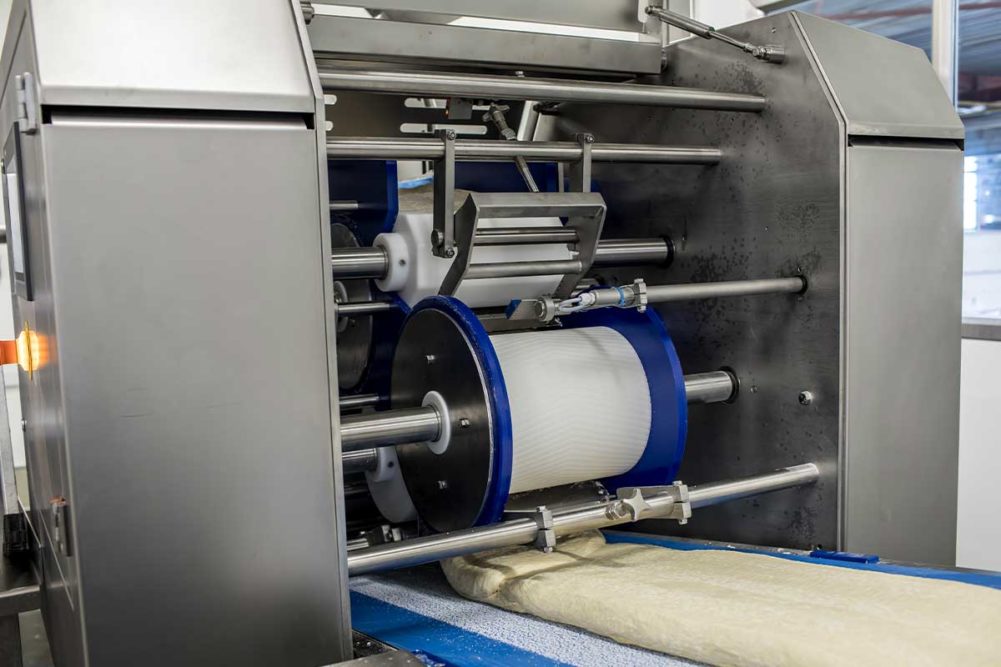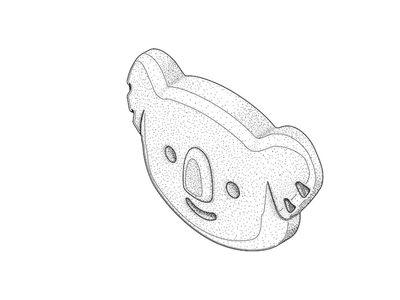When designing a sheeting line to be flexible for flatbreads, the conversation always starts with the products, both current and future. Producing naan, pita, wraps or lavash and their various sizes will determine what capabilities the line must have.
“Our machines have the capability of doing both tortilla and flatbreads,” said Sergio Caballero, regional sales manager, FoodTools. “We design the units around what the customer wants, and this is all discussed when the project starts out.”
In addition to ensuring the line comes with the proper components in place, flexibility adds length, which can sometimes be an issue.
“The key to having a line able to produce diverse product is knowing which products could be potentially made on the line before it’s designed,” said John Giacoio, vice president of sales, Rheon USA. “This allows you to at least be sure you have the necessary space for any future options.”
The types of products will determine the appropriate number of sheeting stations and cutters to get the right shapes and sizes, but it’s also critical to understand the types of dough that will be running on the line.
“When designing a flatbread line, you need to be having discussions around the end product because the grain structure you’re looking for in the end product will translate to dough forming and the work you put into the dough throughout the line,” said David Moline, president, Moline Machinery. “If you want a flatbread that has a more open texture, that will be a low stress system. If it’s a wrap-style you’re looking for a tighter dough system.”
Bill Zimmerman, regional account manager, AMF Bakery Systems, follows three priorities: products, formulation and throughput goals.
“We start with the core product, whether it’s a standard naan or mini naan, for example,” he explained. “Then we choose the appropriate processing steps, like whether there is proofing before or after a die cutter and managing the critical dough transfer points. Throughput comes down to the speed and width of the belt, getting more products across the width can provide the volume the customer needs.”
Beyond conventional flatbreads and tortillas, bakers are dabbling in non-conventional products to gain extra consumer dollars. These can be keto-friendly or gluten-free formulations, added nutrition products such as high protein or fiber, or even just flavor-based products such as spinach wraps. Some of these doughs require a little extra attention on the production line than simply an extra sheeting station, though that sometimes helps, too.
“These types of dough have different characteristics depending on the formulation,” said David Kollar, senior regional sales manager, Rondo. “Testing must be done to understand the behavior of the dough.”
Gluten-free doughs, for example, notoriously lack the elasticity necessary to survive the sheeting process. Kollar noted these doughs can be fragile and crumble easily when handled incorrectly. Low-carb and high-protein doughs will all perform differently based on individual formulations. That’s why testing is so critical to designing any flatbread or tortilla line, but even more so when the products are unconventional.
“The key is to first test on a line to be sure it runs well with these specialized doughs,” Giacoio said. “Once you have identified any areas of concern, the equipment can be manufactured to overcome those concerns.”
John McIsaac, vice president of strategic business development, Reiser, said in addition to testing, listening to bakers’ challenges is of the utmost importance. It’s how the company’s bakery specialists and engineers understand what makes a product unique so that they can configure Reiser’s Vemag divider to form, cut and place the dough with accurate scaling.
“Once the customer determines their end result — product characteristics, rate, downstream equipment — we recommend he talk to a number of equipment suppliers to determine the best solution,” he said. “What always worked with standard tortillas often does not work with these specialty products.”
All of this is in service of not sacrificing quality on the altar of efficiency and automation, which is important regardless if the finished product contains gluten, spinach, extra protein or eliminates gluten all together.
“Our job is to look at that finished product and meet or exceed the existing product quality, so we ask a lot of questions,” Zimmerman said. “Our job is challenging because we must meet each client’s specific quality standard. That’s always the goal. When our clients come to the innovation center, we can run testing with their formulas, and their bakers, working in partnership with ours, can evaluate the appropriate automation for the appropriate products and process.”
Flatbread sales are often driven by consumers’ perception that these products are authentic to the cultures they originate from, and the baking companies, especially those still family owned, have those reputations to maintain.
“We don’t want to change our bakers and the things that made them successful,” explained Nick Magistrelli, vice president of sales, Rademaker USA. “They provide us valuable information so we can configure their line to meet their products’ needs. We bring them into our lab to work with our bakers and engineers to collaborate and design the line to meet their products’ idiosyncrasies.”
When it comes to the components and processes bakers can incorporate and tweak to meet those idiosyncrasies, there are plenty of options.
This article is an excerpt from the April 2024 issue of Baking & Snack. To read the entire feature on Tortilla & Flatbread Processing, click here.





